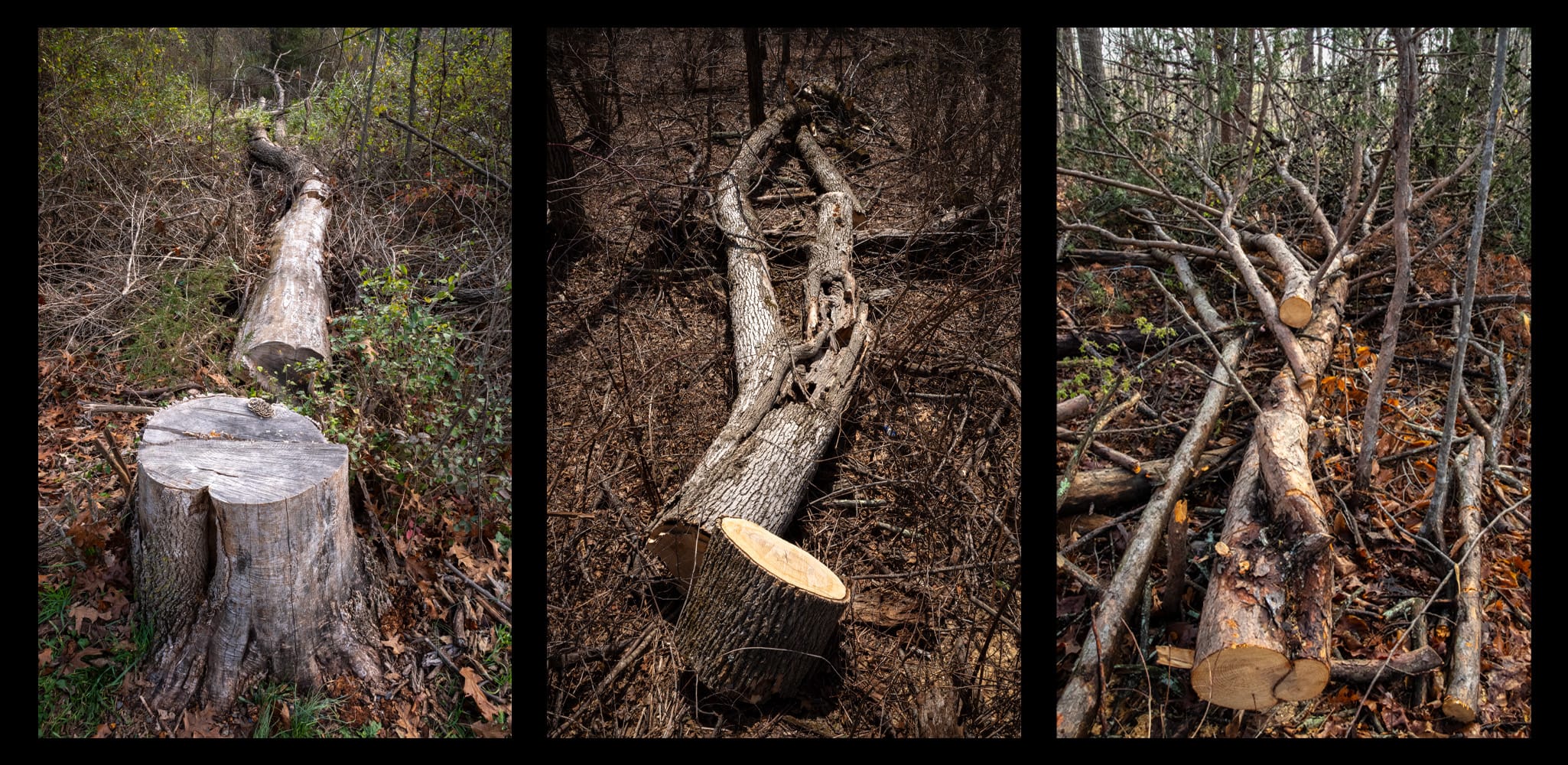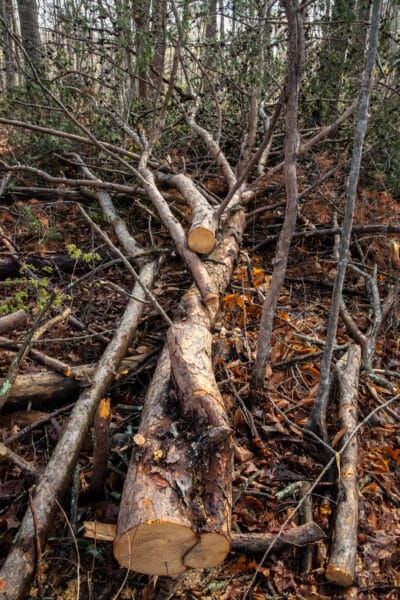
Triptych #15
Last winter I found myself paying attention to the downed trees that I’d normally look past. While I’ve done a lot of photo work using fallen trees, I purposefully avoided any that were obviously felled. That decision was two fold: 1) Decaying trees that have fallen naturally do decay differently. 2) It felt important that they had fallen without external technology for the metaphors and concepts I was working with.
I finished off a number of photo series last year. The decaying wood black and whites, Transformation Through Decay, weren’t part of that, but it didn’t really work for the type of work I had in mind. I wanted images that could make the viewer feel the presence of destructive technology without seeing the actual tool. I hadn’t anticipated these photos being in color, but found that the color variation from image to image and contained within each image had something to say.
What Remains
I recently came back to the book What Remains by Sally Mann. Mann is a quiet local hero in the Shenandoah Valley. While so much of her work deals with “place”, the name of the place in her work is often unimportant. This has lead to having conversations with local photographers familiar with her work who had no idea that she lived and worked just a few miles down the road.
I always felt a sense of “home” in her images, but What Remains was different. This book initially felt foreign, off-putting, and far too aggressive. There is something about being confronted with photographs of decaying human bodies that never feels common place, despite them showing up in my life nearly daily. When re-approaching this book today I began to feel the presence of the life that came before in those images—both for the person present, but not always seen, and for the person making the photograph.
Death is a hard subject to work with made even more difficult by the overwhelming amount of work made on the topic. But Mann’s approach in this work has a romanticism and poetry to it that is often missing. Her photos are confronting you with things you’d rather not think about, but if you can sit with them, the aggression gives way to a deep empathy, both for the subject and viewer.
Back to my tree photos
I often avoid wide angle compositions because I find there is a certain “romance” in them. While I hope my work is seen as being full of emotion, I often try to pair that with a less romantic or more analytical perspective. Part of that is probably some fear of opening that part of myself to the viewer, but generally I do this in order to leave space for the viewer to reflect their own emotions and romanticism. I wanted to do something different with the camera angle and focal length, while preserving an element of the analytical through the use of similar perspectives on different scenes.
I am going to, uncharacteristically, leave it up to the viewer to explore meaning and metaphor in these images. I imagine that that will generally be my approach for the foreseeable future.
Thanks for stopping by. Leave a note if you have thoughts on Sally Mann’s book. I’d be really curious what other people make of her work.



Leave a Reply